Second Fiordland moose sighting in as many weeks
Sue Fea © the Southland App
28 April 2025, 9:35 AM
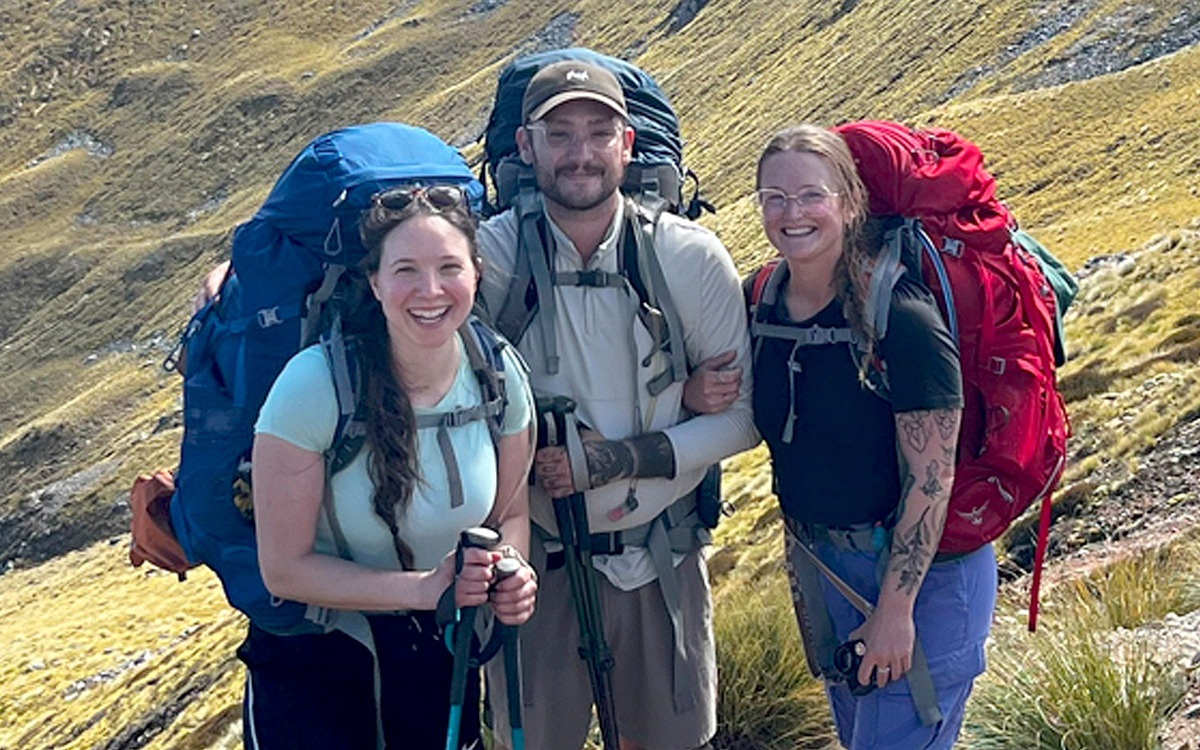 Canadian tourists Annie-Pier Bourgeois, Antoine Beauchamp and Chanel Sabourin-Dubois believe they spotted a Moose - with antlers - on the Kepler Track only days after a sighting by Minnesota veterinarian Norbert Nigon. Photo: Supplied
Canadian tourists Annie-Pier Bourgeois, Antoine Beauchamp and Chanel Sabourin-Dubois believe they spotted a Moose - with antlers - on the Kepler Track only days after a sighting by Minnesota veterinarian Norbert Nigon. Photo: SuppliedThree Canadian hikers, familiar with moose in the outdoors, have reported seeing what they believe was a young male moose at close range while hiking the Kepler Track in Fiordland National Park early on 29 March – the second sighting in the area within a fortnight.
Annie-Pier Bourgeois, Antoine Beauchamp and Chanel Sabourin-Dubois were walking near the Iris Burn camp site when they came across what they believe was a moose drinking from the river between the camp site and Rocky Point Shelter.
“I think we surprised it drinking at the river and it took off, crossing the track in front of us about 25m away to run off into the forest,” Beachamp says.
“All three of us were thinking independently, ‘That’s a moose!’, but we thought moose were only in the Northern Hemisphere,” he says.
The distinctive moose-like features and height made them sure it was a moose, but it wasn’t until Tracknet bus driver Brenda Thomas jokingly said to them on the journey back to Te Anau, ‘Did you see any moose?’ that they realised the significance of the sighting.
“We didn’t know moose sightings were even a thing here, or anything about the other recent one, until the driver asked us that to which we replied in all seriousness, ‘Yes’.”
A surprised Thomas then explained “all the legend” and about the sightings in the park. “I think she’d expected to have a laugh with us,” Beauchamp chuckles.
The trio from Quebec were expecting to see lots of kea as they’d been warned about those but definitely not their own national animal in New Zealand.
An experienced hunter with a Bachelor in Environmental Studies and a Master’s in Environmental Law, Annie-Pier Bourgeois says she became “increasingly convinced” that it was a moose.
“Because after looking at photos and descriptions of red deer, they don’t quite match what I saw, especially in terms of the colour and size of the animal,” she says.
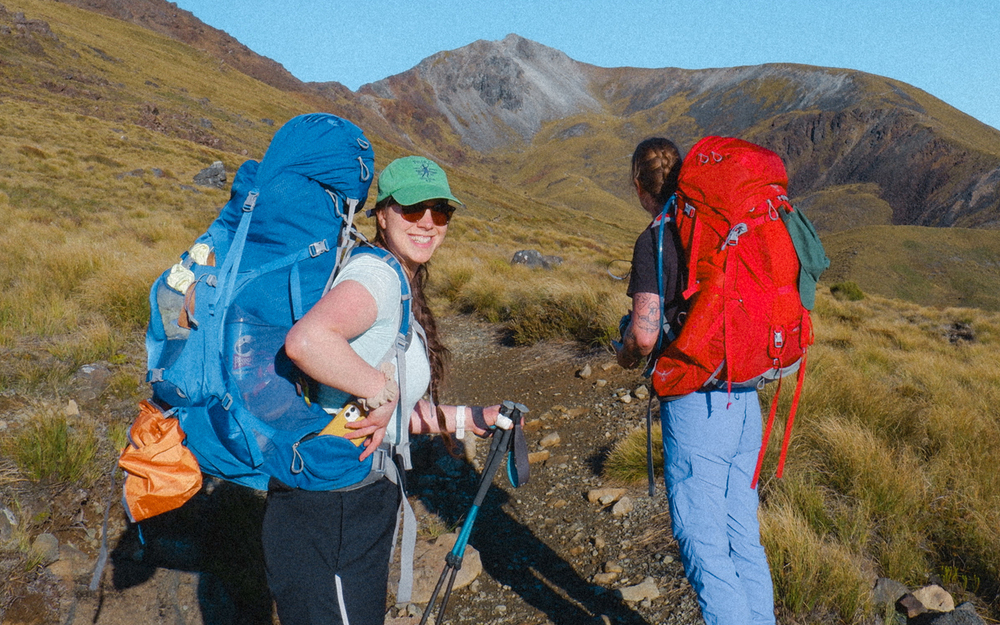
Canadian's Annie-Pier Bourgeois and Chanel Sabourin-Dubois on the Kepler Track. Photo: Supplied
Bourgeois, who lives in the Canadian woods, has also accompanied her partner on moose hunts in Quebec, completed her Hunting Education Course – a mandatory hunter education programme required to legally hunt in most parts of Canada.
“I know very well how to distinguish between deer and moose, and I have seen them several times,” Bourgeois says.
“So I’m certain that it was not a deer at all, especially because of the size of the animal.”
While she couldn’t claim complete certainty she says the combination of size, colouring, behaviour, and her previous experience in the Canadian wilderness strongly support the moose sighting.
Bourgeois was leading the trio at the time and says the animal was near the river, between the river and the trail about 25m away.
“We were first on the trail as we left at sunrise. When it heard us, it jumped over the trail and went into the forest,” she says.
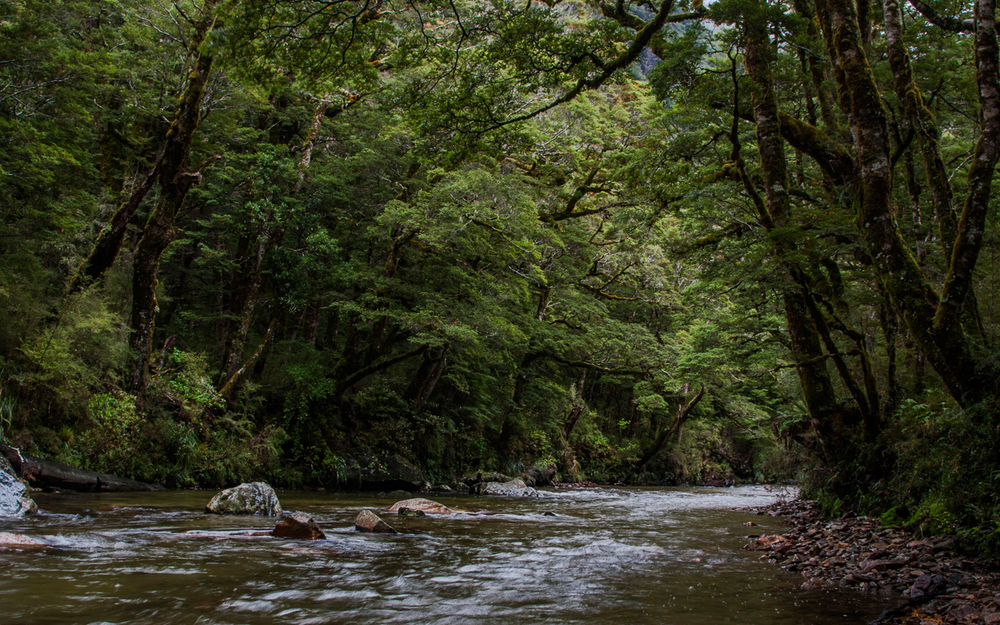
The Iris Burn on the Kepler Track, near where three Canadian tourists claim to have seen a moose with antlers. Photo: Chris Watson/ProFocus Photography
“It was very large – as large as a horse, even larger, dark brown, with no colour gradation, but a fairly uniform colour for the parts I saw,” she says.
“I saw antlers without velvet, quite long and without branches, so with only one branch.”
Beauchamp says the animal was “unmistakably moose-like”.
“We all instantly thought, without talking to each other, that it was a moose,” he says.
The three Canadians who do a lot of outdoor sports, hiking and canoeing, say they were struck by the fact that this animal looked “exactly like a Canadian moose”.
The shape of the body and of the antlers as well (probably a young moose), the colour and the size of it was unmistakable,” Beauchamp says.
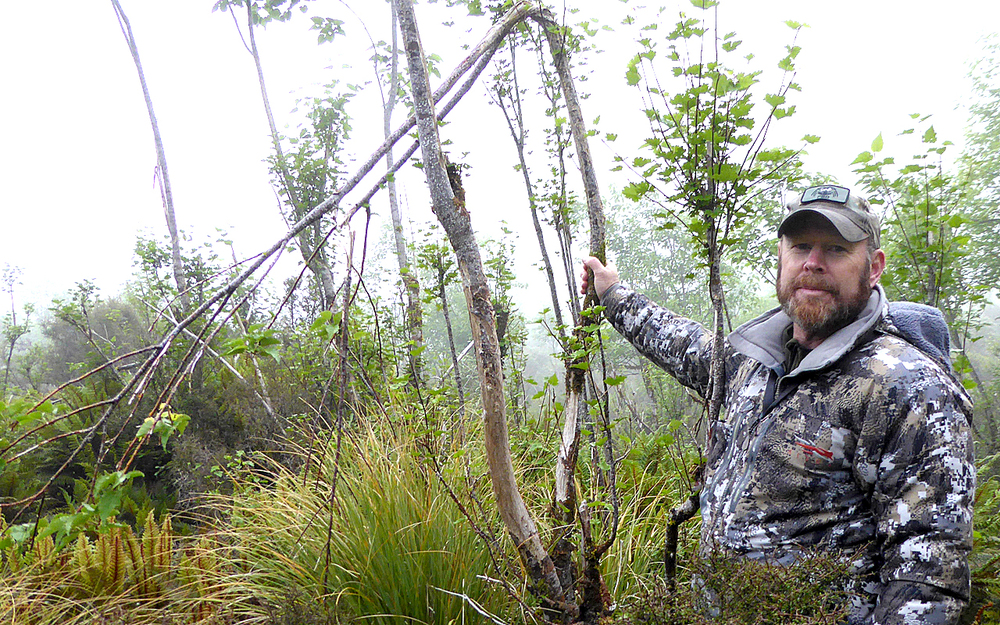
Kiwi-born Aussie Matt Ellis, an experienced moose and grizzly bear hunter, said he, along with Ken Tustin and Sir Richard Hayes, came across moose sign just six weeks ago in the Fiordland National Park. This follows a moose sighting around the same time by North American veterinarian Norbert Nigon. Photo: Supplied
“We all noticed the shape of the back. It’s wavier – a deer is straighter, and they have a shoulder hump. That was very striking,” Beauchamp says.
“It was very, very high on its legs, probably a teen as the antlers weren’t as big as an adult. Moose antlers are bulkier than a deer which has very narrow, pointy antlers.”
Long-time moose researcher Ken Tustin, who has spent decades investigating the Fiordland moose, says these two highly-credible independent reports coming so close together were “highly significant”.
“These are two extremely impeccable sightings from people with excellent credentials, both sightings within a very short time.”
The Canadians’ sighting was only about half a day’s hike from the earlier sighting by two Americans about a fortnight prior.
Tustin says it was thanks to Tracknet driver Brenda Thomas that the sighting was even reported, and he was very grateful.
Thomas, aware of the sightings reported just two weeks earlier, says the comment “pricked her ears up” when chatting to the Canadians.
Recognising its potential significance, she reported the encounter to the Department of Conservation in Te Anau, which ultimately led to the Canadians connecting with Tustin.
“This is amazing information to help us tell the moose story, absolutely brilliant. We’re thrilled,” Tustin says.
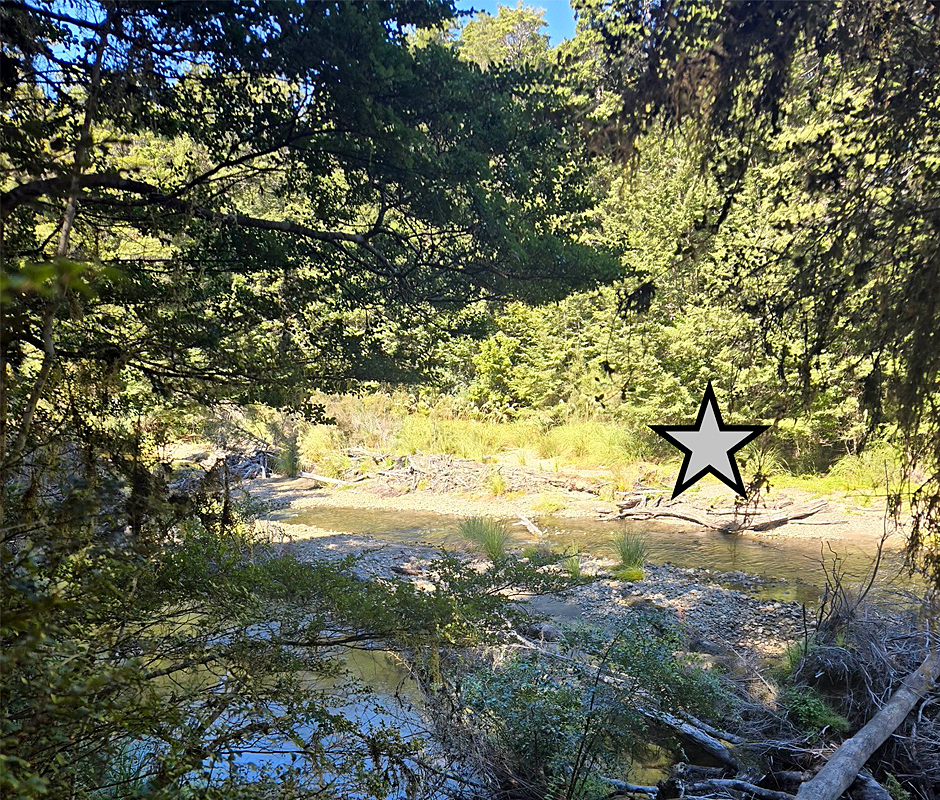
The site, on the Kepler Track, of a moose cow sighting on 13th March by Minnesota veterinarian Norbert Nigon. Photo: Supplied
“The Canadians’ background, combined with the nature of the sighting, makes it a strong and credible report," Tustin said.
“That it follows closely after Norbert Nigon’s sighting—an extraordinarily capable observer—is an extraordinary coincidence.”
Tustin suggests the presence of these two moose in this area may have been inspired by the search for forage in a depleted forest, or the restlessness and search for mates during the present rut.
One of the most telling aspects of both reports lies in the description of the animals’ colouring.
“Unlike red deer or elk, which display a distinctive pale rump patch easily visible when they flee, moose do not."
"Both sightings described animals with a uniform dark brown colour as it turned, with no mention of a white rump—a subtle but critical detail that strongly supports moose identification over other large species found in Fiordland,” he said.

Ken Tustin talks with helicopter pilot Ben Young in March 2020, after Young spotted a moose in Fiordland National Park. Photo: Kirsty Macnicol/Southland App
Tustin says that while Fiordland’s moose population remained elusive for decades, DNA records, trail camera footage, cast antlers, tracks and the distinctive browsing sign add up to confirming a remnant moose population continues to exist in 2025, albeit teetering on the verge of extinction, 115 years after their ancestors were released at Dusky Sound.
He encourages anyone who believes they may have seen a moose to come forward, noting that every credible record helps us learn more about moose here, and better understand the remarkable story in New Zealand's most challenging wilderness.